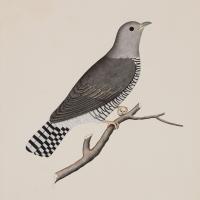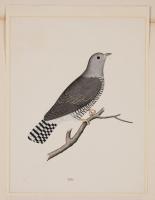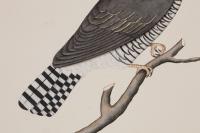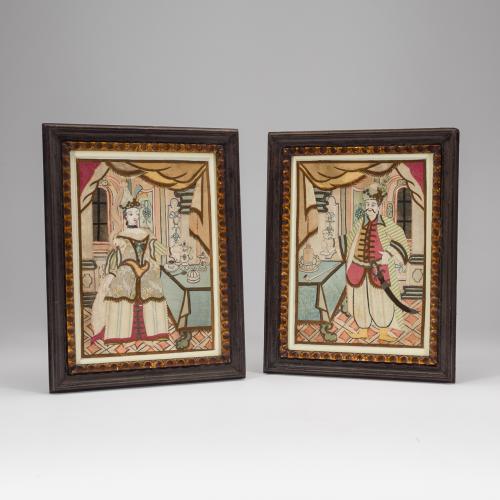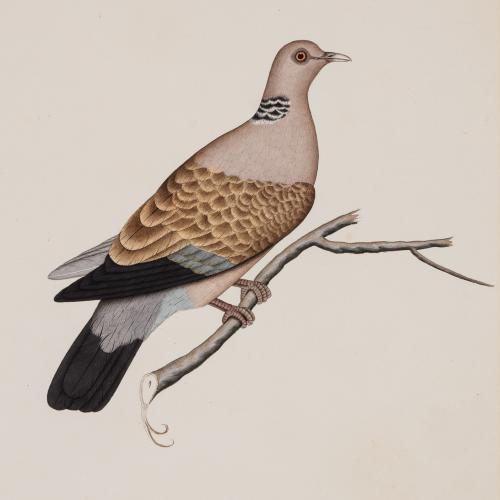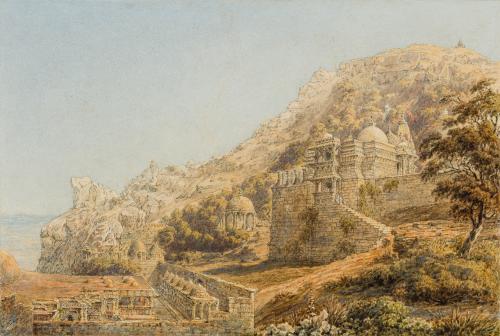
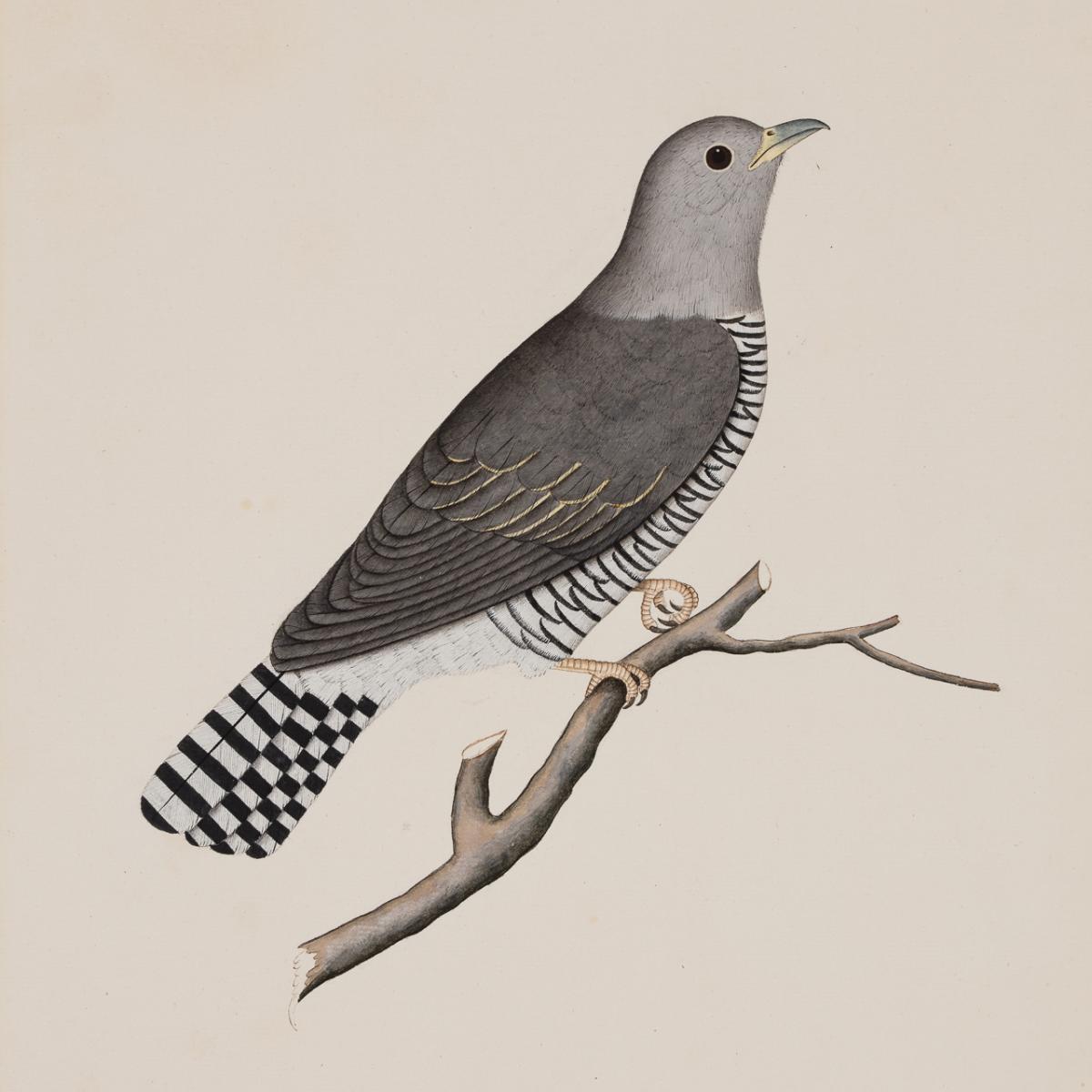
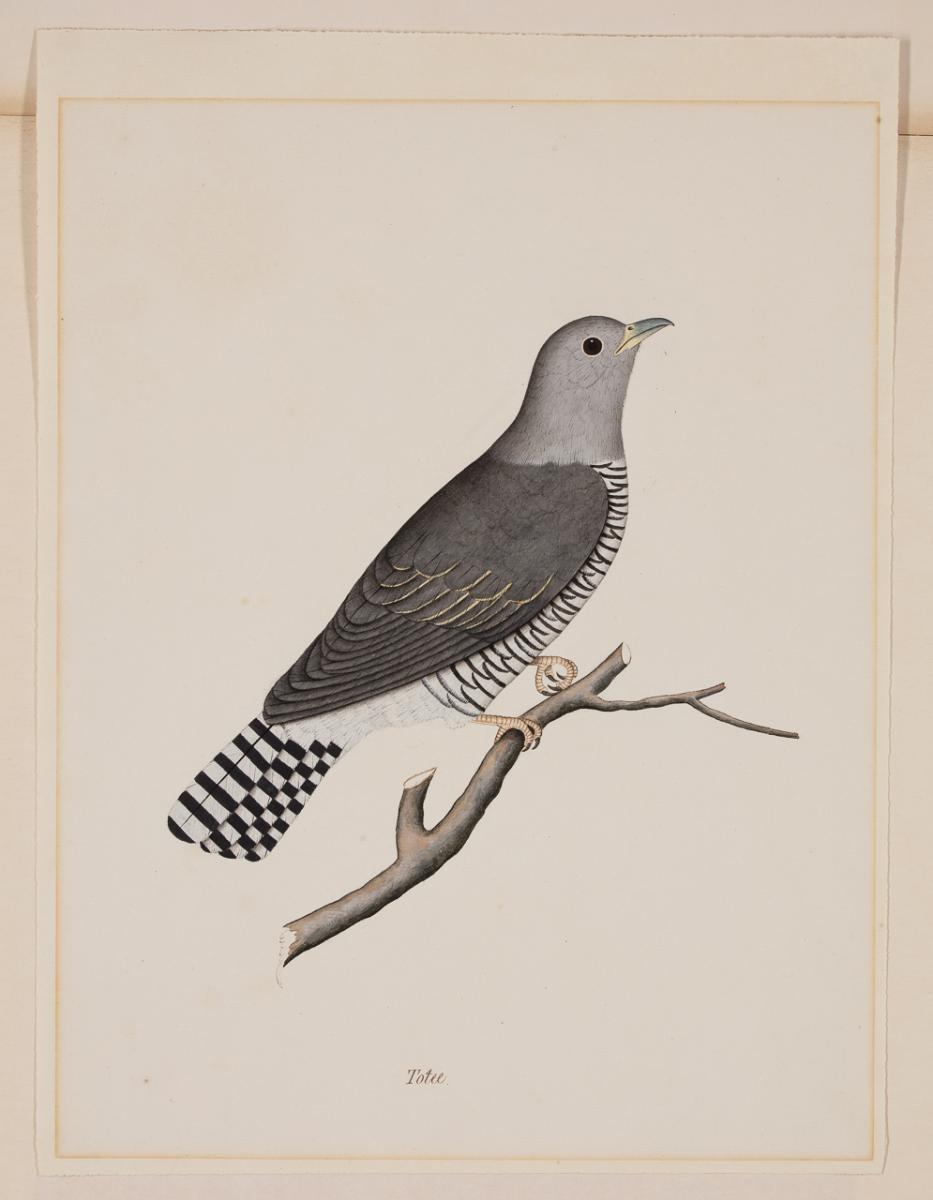
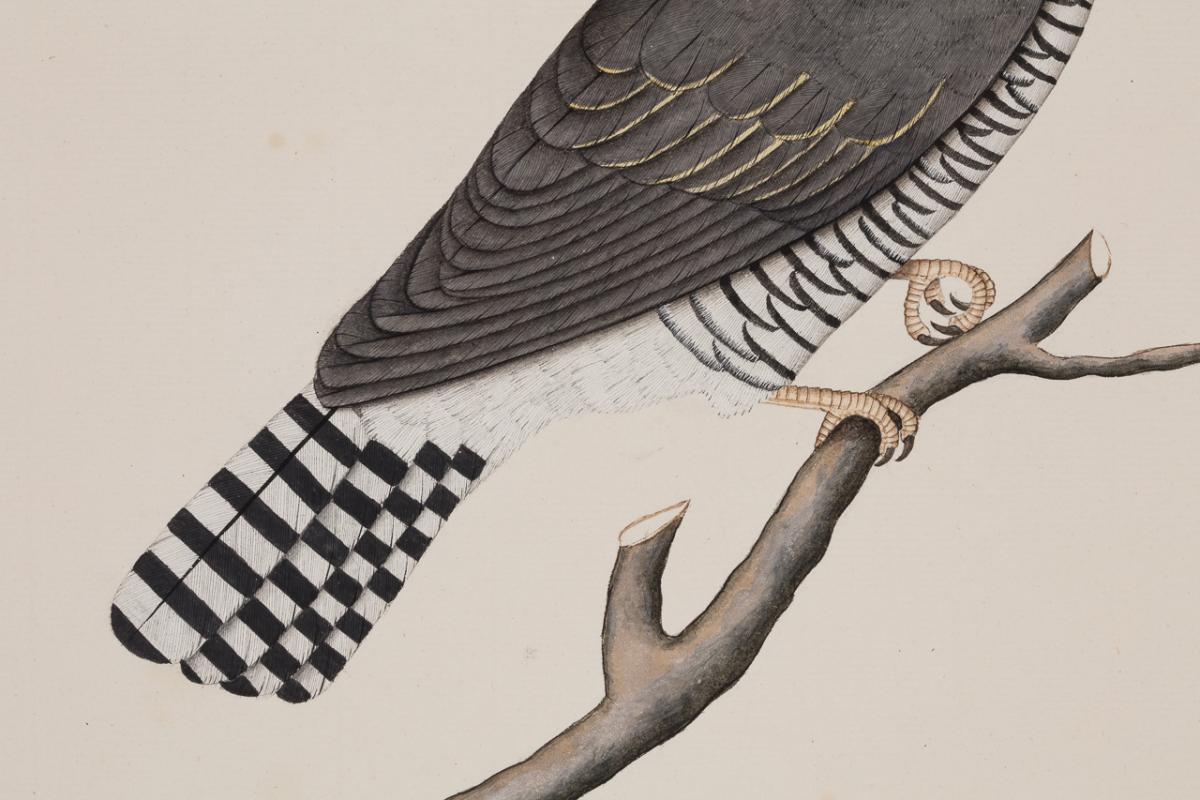
Price on application
This object is eligible for a Certificate of BADA Provenance
The BADA Standard
- Since 1918, BADA has been the leading association for the antiques and fine art trade
- Members are elected for their knowledge, integrity and quality of stock
- Our clients are protected by BADA’s code of conduct
- Our dealers’ membership is reviewed and renewed annually
- Bada.org is a non-profit site: clients deal directly with members and they pay no hidden fees
Company School Painting of a Cuckoo, Labelled Totee.
India, circa 1800.
Gouache on paper.
56.5cm high, 46.5cm wide.
Provenance: Purchased from Toby Falk in 1975.
Prominent UK private collection.
Though it is rather charmingly labelled ‘Totee’, a transliteration of the Hindi word तोता meaning ‘parrot’, this painting depicts a member of the cuckoo family. Several members of the Cuculidae family native to India, including the Himalayan (Cuculus saturatus), Oriental (C. optatus), and Indian Cuckoos (C. micropterus), feature black barring on white breasts and black banding on their tail feathers.1 All of these species are, however, solitary birds, found in hilly wooded areas, suggesting that the artist drew from a captive bird rather than a wild one. The bird is painted with gouache on European cartridge paper, watermarked with a fleur-de-lys and the letters GR, the cipher of George III (r. 1760-1820). Particularly fine brushwork can be observed under the chin of the cuckoo, where a single strand of hair has been used to paint fine ruffled feathers. The cuckoo’s left foot is raised, and the middle toe of its right foot is lifted off the branch, as if ready to take flight.
Company paintings were so-called because they were commissioned by employees of the British East India Company, documenting the new flora and fauna they encountered to send home to their loved ones.2 The artists were local Indians, whose names have generally been lost in favour of the commissioning Company men. As the first capital of British India, Calcutta was one of the early production centres. Calcutta School avifauna paintings can be distinguished by the absence of background or shadows cast by the birds, as well as the great attention paid to the plumage. Artists were hired to paint the menageries and botanical gardens of wealthy patrons like Lord Impey, chief justice of the High Court, and the Marquess Wellesley, governor general.3 This painting comes from an album of bird paintings commissioned by a wealthy British patron. Other pages, including studies of a swift in flight, a woodpecker, a grey-headed myna and an unidentified black bird, have been sold at auction over the past decade. The Calcutta School was, however, short lived, dwindling when photography was introduced to India in the early 1840s.
1 Ali, Salim, and Ripley S. Dillon. Handbook of the Birds of India and Pakistan, Together with Those of Nepal, Sikkim, Bhutan and Ceylon. Vol. 3. 10 vols. Bombay: Oxford University Press, 1968. Pp. 204-215.
2 Sardar, Marika. ‘Company Painting in Nineteenth-Century India.’ In Heilbrunn Timeline of Art History. New York: The Metropolitan Museum of Art, October 2004.
3 Ibid.
The BADA Standard
- Since 1918, BADA has been the leading association for the antiques and fine art trade
- Members are elected for their knowledge, integrity and quality of stock
- Our clients are protected by BADA’s code of conduct
- Our dealers’ membership is reviewed and renewed annually
- Bada.org is a non-profit site: clients deal directly with members and they pay no hidden fees


